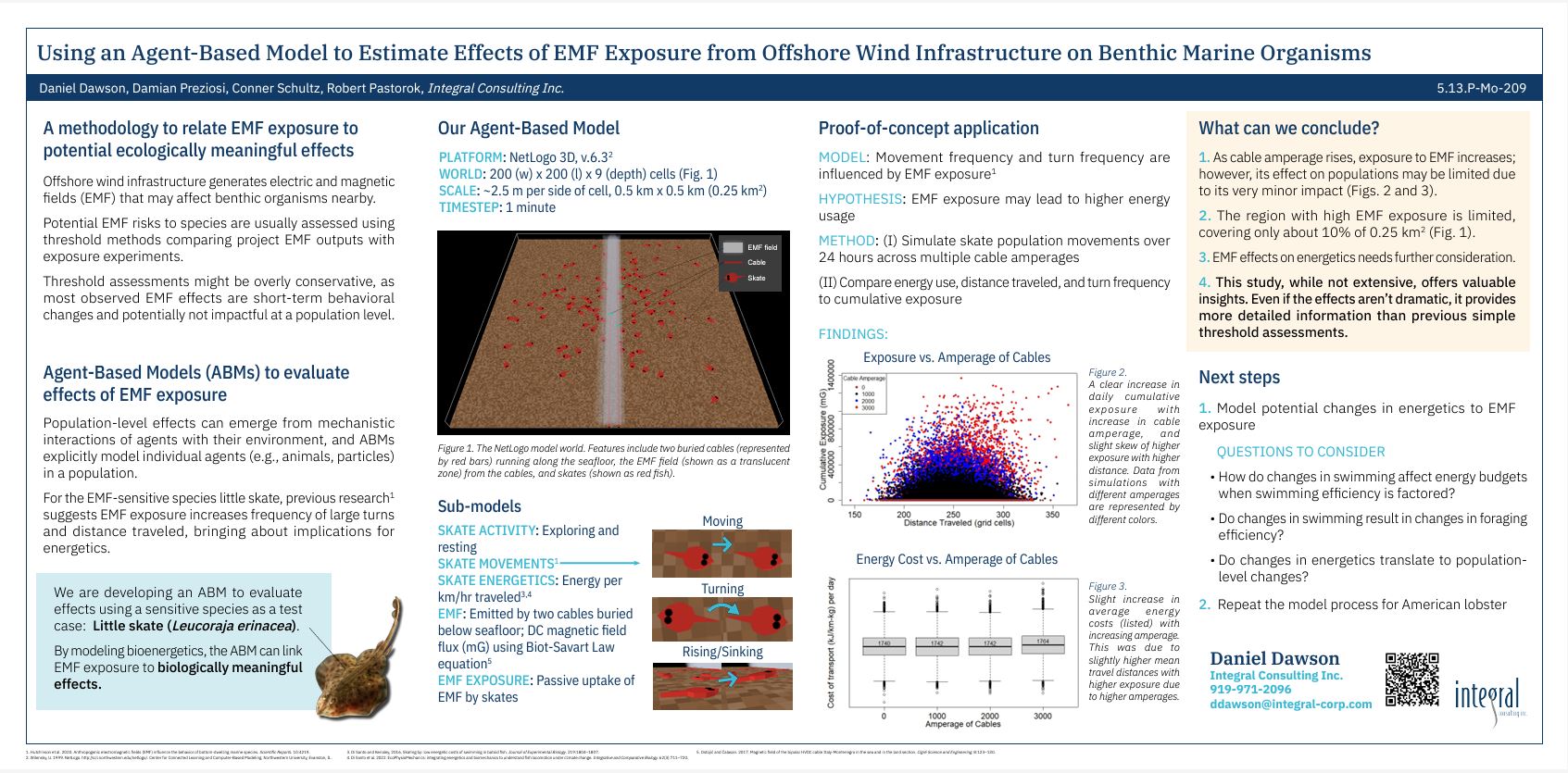
Dr. Dan Dawson is an ecologist and environmental toxicologist with a general interest in the use of quantitative approaches to understanding and addressing human and ecological problems. With more than 12 years of graduate and post-graduate experience, he has worked with private organizations, academic institutions, and government agencies to tackle a diverse set of questions. Along the way, he has acquired expertise in a wide variety of topics and quantitative toolsets, including chemical and electromagnetic field exposure modeling, population modeling, disease transmission modeling, machine learning/quantitative structure–activity relationship (QSAR) modeling, habitat equivalency analysis (HEA), and statistical modeling. Dr. Dawson has published much of his work in the peer-reviewed literature, and he has frequently presented research at scientific conferences. Finally, he is interested in continually improving science communication and believes that scientific information should be conveyed clearly, concisely, and with as little jargon as possible.
Ph.D., Environmental Toxicology, Texas Tech University, Lubbock, Texas, 2016
M.Sc., Wildlife Ecology and Conservation, University of Florida, Gainesville, Florida, 2007
B.Sc., Wildlife Ecology and Conservation, University of Florida, Gainesville, Florida, 2004
Member of the Society of Toxicology: Exposure Specialty Session
Member of the Society of Environmental Toxicology and Chemistry: Careers Committee
Member of the Interstate Technology and Regulatory Council: Contaminants of Emerging Concern Biologicals Team
Dan Dawson, Ph.D. Senior Scientist
Dr. Dan Dawson is an ecologist and environmental toxicologist with a general interest in the use of quantitative approaches to understanding and addressing human and ecological problems. With more than 12 years of graduate and post-graduate experience, he has worked with private organizations, academic institutions, and government agencies to tackle a diverse set of questions. Along the way, he has acquired expertise in a wide variety of topics and quantitative toolsets, including chemical and electromagnetic field exposure modeling, population modeling, disease transmission modeling, machine learning/quantitative structure–activity relationship (QSAR) modeling, habitat equivalency anal...
Dr. Dan Dawson is an ecologist and environmental toxicologist with a general interest in the use of quantitative approaches to understanding and addressing human and ecological problems. With more than 12 years of graduate and post-graduate experience, he has worked with private organizations, academic institutions, and government agencies to tackle a diverse set of questions. Along the way, he has acquired expertise in a wide variety of topics and quantitative toolsets, including chemical and electromagnetic field exposure modeling, population modeling, disease transmission modeling, machine learning/quantitative structure–activity relationship (QSAR) modeling, habitat equivalency analysis (HEA), and statistical modeling. Dr. Dawson has published much of his work in the peer-reviewed literature, and he has frequently presented research at scientific conferences. Finally, he is interested in continually improving science communication and believes that scientific information should be conveyed clearly, concisely, and with as little jargon as possible.

Applying AQUATOX to Aquatic Mesocosms for Higher-Tier Pesticide Risk Assessment
Poster
April 28 2023- Data Science
- Ecological Modeling
- Natural Resource Damage Assessment
- Human Health Risk Assessment
- Statistical Modeling
- Product Stewardship
- Toxicology
- PFAS
- Statistical Analysis

